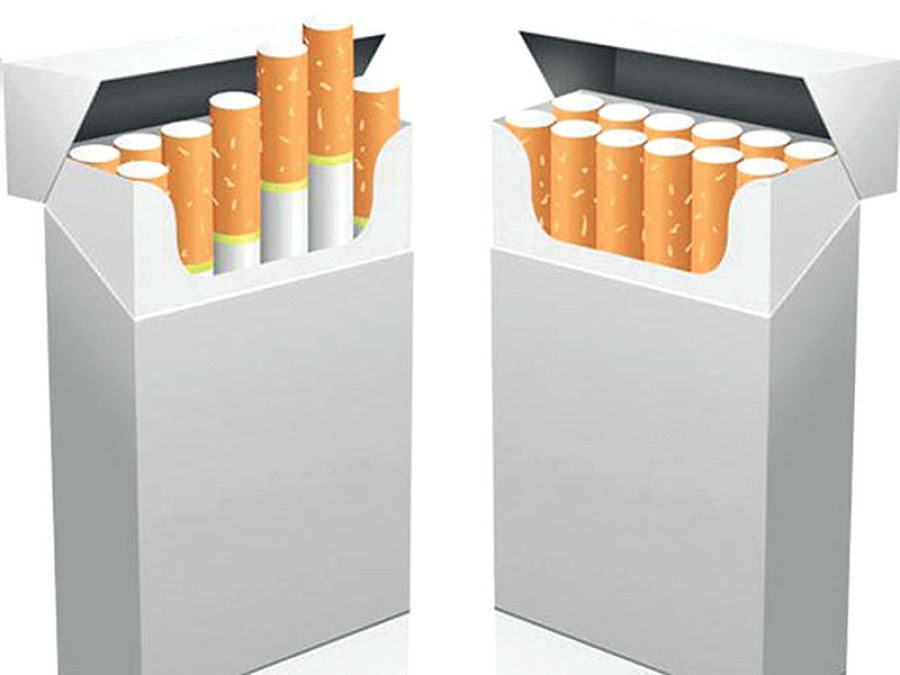Opinion
Where there’s smoke
In 2005, the World Health Organisation Framework Convention on Tobacco Control (WHO FCTC) went into effect, under which parties to the convention are obliged to take steps to reduce demand and supply for tobacco products.
Rishi Ram Chapagai
In 2005, the World Health Organisation Framework Convention on Tobacco Control (WHO FCTC) went into effect, under which parties to the convention are obliged to take steps to reduce demand and supply for tobacco products. Protecting people from exposure to tobacco smoke, banning tobacco advertising, promotion and sponsorship, banning sale to minors, requiring health warnings on tobacco packaging, promoting tobacco cessation, increasing tobacco taxes and creating a national coordinating mechanism for tobacco control are the actions that the parties are required to take.
Currently, there are 180 parties to the convention. Nepal became a party in 2007. All the parties are required to ban tobacco advertising and promotion. As a result, tobacco packaging has become the key advertising tool for the tobacco industry to entice smokers.
All the same
Articles 11 and 13 of the WHO FCTC defines plain packaging as measures to restrict or prohibit the use of logos, colours, brand images or promotional information on packaging other than brand names and product names displayed in a standard colour and font style. Plain packaging is recommended in WHO FCTC guidelines as part of a comprehensive approach to tobacco control that includes large graphic health warnings and a comprehensive ban on tobacco advertising, promotion and sponsorship.
In December 2012, Australia became the first country to fully implement plain packaging. In May 2016, France and the United Kingdom also implemented plain packaging. Ireland is preparing to introduce the measure while other countries are exploring their options. Plain packaging restricts tobacco advertising and promotion in a bid to limit and reduce the attractiveness of tobacco products. WHO Director-General Dr Margaret Chan said that plain packaging increases the effectiveness of health warnings and kills the glamour of the tobacco product that kills people.
Tobacco related research by the WHO has revealed that around 1 billion people will die in the 21st century if current smoking patterns continue. It also mentions that more than two-thirds of tobacco deaths occur in low and middle income countries. Issuing a rebuttal, tobacco companies claim that plain packaging and other tobacco control measures will increase illicit trade.
Tobacco free Nepal
In Nepal, the Tobacco Product (Control and Regulation) Act 2010 is the primary law governing tobacco control and regulates, among other things, smoking in public places, work places and public transport; tobacco advertising, promotion and sponsorship; and tobacco packaging and labelling. Since 2015, cigarette manufacturers have been required to place graphic health warnings covering 90 percent of the front and back of all tobacco product packaging.
Speaking at the South Asia Tobacco Control Leadership Programme held recently in Kathmandu, Health Minister Gagan Thapa declared that Nepal would adopt plain packaging on tobacco products by 2018. He also said that the government was planning to declare the country tobacco-free by 2030. Plain packaging for all tobacco products will eliminate a key residual means for the industry to promote its products to billions of the world’s smokers and future smokers. Requiring plain packaging is consistent with the objective of banning tobacco promotion.
The tobacco industry is raising legal objections that mandatory plain packaging violates laws and international trade agreements. However, there is very little public support for tobacco companies. Medical and public health groups have shown strong support for plain packaging. Besides challenging plain packaging in court, tobacco companies and their supporters have put forward a great number of claims to buttress their argument. Last May, a WTO dispute panel decided that Australia’s tobacco plain packaging laws were a legitimate public health measure. The dispute panel had rejected a case made by Cuba, Honduras, Dominican Republic and Indonesia that the laws constituted illegal barriers to trade. The panel decision has been widely acclaimed as giving a green light for other countries to roll out similar laws, not only on tobacco but also on alcohol and unhealthy foods. It encourages a large number of countries to introduce or take steps to introduce plain packaging for tobacco products.
In order to implement plain packaging and make Nepal a tobacco-free country, the government should start work to prepare a policy. The government can provide cash incentives and agricultural inputs to tobacco farmers to encourage them to switch to growing other cash crops, fruits and vegetables as part of its tobacco control initiative. If political parties and policymakers are highly committed to making the country tobacco-free, plain packaging is not far away in Nepal.
Chapagai is an MBA faculty member at Boston International College, Bharatpur, Chitwan




 18.12°C Kathmandu
18.12°C Kathmandu











